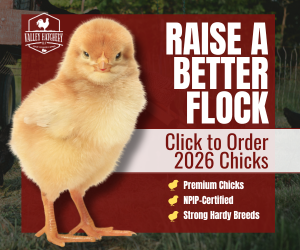I have found that chicks do a much better job of deciding what they need than we do. I use Mama Heating Pad exclusively, and I start my chicks outdoors when our springtime chick season temps are in the 20s, dropping into the teens. When I raised my first chicks using it, I started the Mama Heating Pad thread just to document what I was doing, why I was doing it, what I learned, what I modified, and how things went. I didn’t start out to “teach” anything. Those chicks were in the house much longer than I planned when hubby had emergency surgery and we were delayed in setting up the outdoor brooder pen.
Early on in the thread,
@azygous asked me what the temperature was under the cave. Shoot, I didn’t know. I’d never measured it. All I knew what that I had happy, thriving chicks that explored, played King of the Mountain on top of MHP, slept quietly straight through the night, and seemed very happy and healthy to me. Well, the temperature on the floor of the heating pad cave was something like 82.5, if I recall, and the room they were in was 69 degrees. Holy smokes!! According to the “experts” my chicks should have been dead. They’d already been living with MHP for over a week and were far from dead. They knew exactly what they needed, when they needed it, and how to get it.
Do I think the recommended temperatures for chicks are overstated? Absolutely!! In fact, I’ll stick my neck out and go one step farther and say that that old 95 the first week, 90 the second, etc., etc., is downright ridiculous and so stressful to new chick owners who just can’t seem to fine-tune that heat lamp. After that first batch went outside to live at about 11 days old, I was amazed that even with ambient temps at that time in the 30s, they behaved exactly as they had in the house. They ducked under MHP for a quick warm-up, or if they got spooked, for a quick catnap, or as the sun set to bed down for the night. That’s when I realized that if a 2 pound hen can successfully raise her broods of chicks outdoors even when winter winds were howling and snow was falling, and do it without charts, experts, books, or websites telling her she’s doing it all wrong, why do we do it so differently and think we’re doing it better? She doesn’t heat their entire environment. She doesn’t have night lights under her wings. She doesn’t see to it that they eat 24/7.
And by the way, while I have no scientific proof, I believe that the 2 factors of overheating and constant eating are the leading causes of pasty butt in chicks. With the light on all the time with no respite, they are constantly close to dehydration. Those are pretty tiny little bodies and they can’t take in as much water as they’re losing to heat. And being awake all night long, what else is there to do but eat? Their little digestive systems are just as immature as their feather growth or any of their other systems. Yet there they are, overloading those still-developing digestive systems with food that they really don’t need and haven’t completely digested before they’re eating again. Under a broody hen, they’d eat what they need during the day, and when they went to sleep at night - in pitch darkness - those little crops and tummies have time to digest what they’ve eaten slowly, as nature intended. When the sun comes up they are cleaned out and ready to take in what they need for growth and nourishment without digestive overload.
That’s my story and I’m sticking to it! Years of successfully brooding batch after batch of chicks outdoors with no heat lamps, no 90 degree requirements, and no exposure to any kind of artificial lights, in temperatures that make experts cringe, and with only 3 cases of pasty butt (those 3 chicks came to us with pasty butt…two or 3 cleanups and it was over) isn’t exactly scientific evidence, but experience has to count for something.



 Just read a great fleece blanket idea too!
Just read a great fleece blanket idea too!

